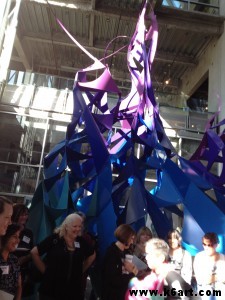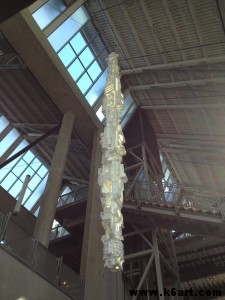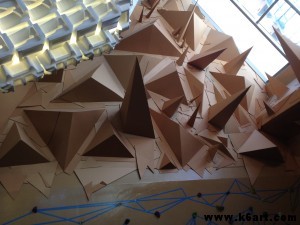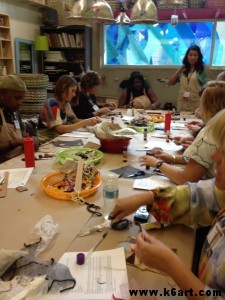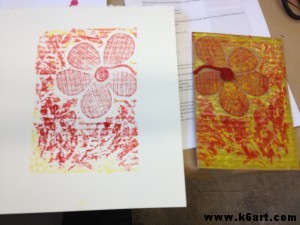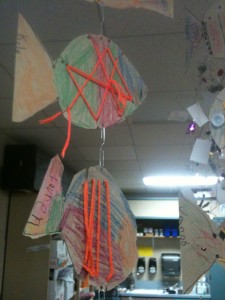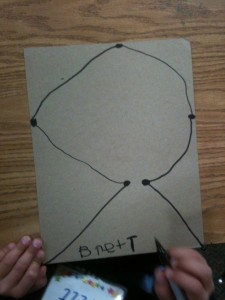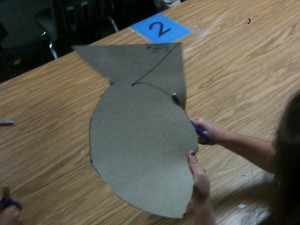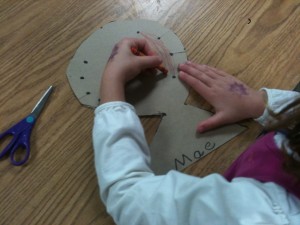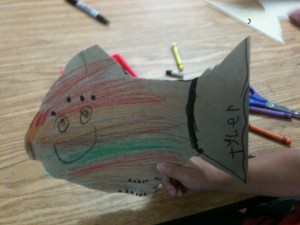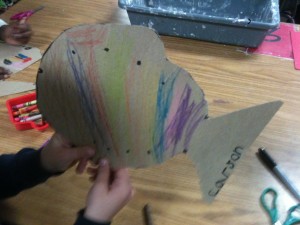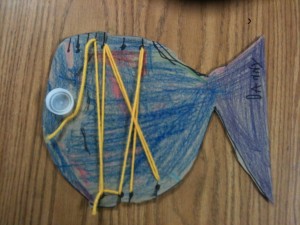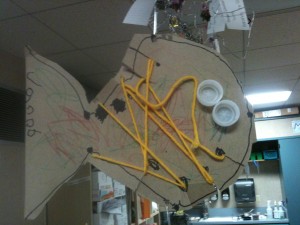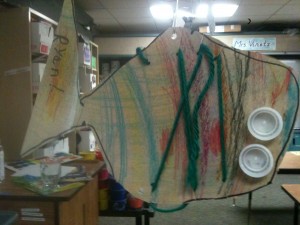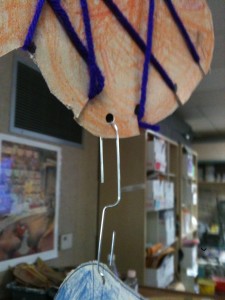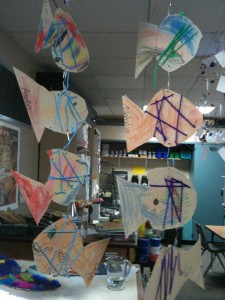What makes a good conference? Great workshops and networking, of course. Hold it in a drop dead AMAZING setting like San Diego’s New Children’s Museum (NCM) and you have a home run hit! San Diego Art Education Association held its first annual Visual Arts Educators Conference this month at the museum. After introductions by energetic new SDAEA president Ron Jessee and a keynote address, Tomoko Kuta, NCM’s Director of Education & Exhibitions, took us on a tour.
The New Children’s Museum is one of the only children’s museum in the United States dedicated to commissioning artists to create site-specific works for a youth audience.
I got to attend three workshops, all tied in to NCM’s current exhibition, TRASH. They were held in the museum’s art education studios.
- ’30-minute’ collograph printmaking with the museum’s art educator, Maxi Moraga
- sculpture/drawing project based on the art of Peter Opheim by fellow San Diego elementary art teacher and blogger Don Masse of Zamorano Arts Academy
- cardboard climbing squares group sculpture based on Charles and Ray Eames’ House of Cards, again by Maxi Moraga
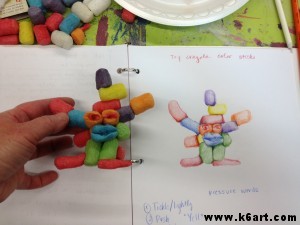
Sculpt/draw with Don Masse. I really admired this project when I first read it on his blog. So thrilled to try it out myself!!
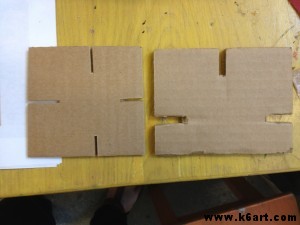
Starting point for the house of cards sculpture. We collaged/painted our pieces, then assembled. This would be a great whole class or whole grade project.
As if all this wasn’t enough, we had a fabulous lunch from Urbane Cafe, gift bags with goodies from Blick and Artists and Craftsmen and a raffle with prizes donated by Blick, A&C and area education and arts organizations. I won tickets to the City Ballet! Thanks also to local arts advocacy group art pulse.
A lot of foks in SDAEA, SD County Office of Education and NCM put together this amazing event. Thanks so much for a perfect day.
Like I said:
BEST. CONFERENCE. EVER.
UPDATE: San Diego County art educators: check out our new SDCAEA Facebook page!

